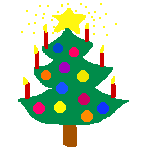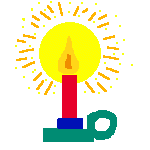Winter Holiday Unit
Grade Level: 1-2
Teacher: Michelle Weber
Unit Length: 3 Weeks
Objectives: The student will recognize various Christmas traditions that have come from different countries.
The student will recognize the traditions of Hanukkah and Kwanzaa.
The student will be exposed to a variety of literature throughout the unit of study.
The student will complete a holiday passport, explaining the traditions of various countries.
The student will complete many hands-on projects to help understand the information presented in class.
Countries Studied: England, the Netherlands, Germany, Italy, France, Sweden, Mexico, the United States, and traditions of the holidays of Hanukkah and Kwanzaa.
Introduction to the Unit: I sent home a letter to the parents telling them about our new unit of study before Thanksgiving. I asked that the parents and child fill out the letter and send it back to school to tell about their holiday traditions and their heritage. I asked the following questions: What is your ethnic heritage? What holiday do you celebrate in your home during December? What special traditions do you observe? What do you like best about this holiday?
Day 1: We completed a mock passport. The students had to fill in the following information about themselves: full name, street address, city, state, zip code, and birthplace. I approved their passport information and stapled it onto their passports. They were then ready to "travel" to our new countries.
Day 2: We started our trip by visiting England. For this country, I read the story The Friendly Beasts, based on an Old English carol illustrated by Tomie dePaola. We then discussed the traditions of England, which include the Yule Log (A log is burned on Christmas Day for 12 hours. The ashes are used to start the fires during the year and it is said to bring good luck.) Sending Christmas cards was a traditions that was began in England, with the first cards printed in the 1840's. Father Christmas is the Santa Claus figure in England. Wassailing or caroling, started in England as well. Wassail is a warm fruit punch that was served to the carolers in England. Wassail translates to "Here's to your health!"
To complete our passports, I had the students fill in the information onto a pre-typed form. The form read: Today's country is ________________. ___________________ means Merry Christmas in ________________. Some traditions from this country are _________________, _________________, and __________________. Here is a picture of my favorite tradition. (In the space below, they would draw a picture of their favorite tradition).
After the passports had been completed, the students made Christmas cards for family or friends. You could also take the Christmas cards and send them to a nursing home.
Day 3: Hanukkah. With the Festival of Lights approaching, I spent 2 days talking about Hanukkah. On this day, we first read The Chanukah Story by (). Then we completed a menorah by coloring it and writing wishes for our family members. That afternoon, we made dreidels from milk cartons by enlarging the symbols from the driedel on the copy machine.
Day 4: Hanukkah. We read the book Latkes and Applesauce. We wrote the following words in our passports that related to Hanukkah (menorah, driedel, latke, Jewish, oil). I had the students draw pictures of oil jugs with colored chalk (symbolizing the miracle of the oil in the temple that lasted for 8 days). They painted over the oil jugs with cooking oil.
Other books read during the study of Hanukkah included: The Trees of the Dancing Goats by Patricia Polacco and The Chanukah Guest by Eric Kimmel.
UNDER CONSTRUCTION
Come Back for more updates on my winter holiday unit.


